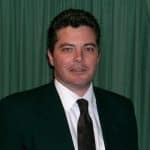When is soil aeration needed? How long does it last?
We carried out a 12-month study looking at answering some key questions relating to when soil aeration is needed and its frequency. Gilba Solutions are Sydney-based independent sports turf consultants and turf agronomists. This work is relevant to lawn owners, sports grounds and councils and relates to timing of aeration work, reseeding and when to apply pre emergent herbicides. Our recent blog on the science of soil aeration may also be of interest. The aim was to answer the following questions:
- How does usage impact on ground compaction?
- What are the most effective strategies for alleviating compaction; vertidraining or hollow tine aeration?
- How effective are these approaches?
- How long does compaction relief actually persist for when the ground undergoes constant use?
- Do you actually need to regulate sports grounds on a regular basis?
This work dovetails nicely with our turf blog on pre-emergent herbicide failure.
Initial Findings
Initial examination revealed the presence of both surface and deep-seated compaction. This was resulting in poor drainage and pooling water after rainfall.
Compaction studies started in August 2021 using both hollow tine and vertidraining. Aeration started in December 2021.
Soil compaction levels above 2000Kpa, prevent ideal turfgrass development.
Conclusions
- Vertidraining is not as effective as hollow tine aeration in alleviating surface compaction.
- Continued usage will completely counter any work carried out. Compaction relief should be an ongoing process rather than a ‘’one-off’’ treatment. So the answer to the question “when is soil aeration needed” is as often as possible.
- A combination of vertidraining and hollow tine aeration gives far better results than any stand-alone treatment.
- Areas above acceptable levels i.e. 2000KPa were evident after aeration work. This further supports an ongoing programme.
- The dual approach (vertidraining and hollow tine aeration) significantly reduces compaction. It does not appear to have addressed all deep-seated levels below 50mm
- These results suggest that any work carried out doesn’t last more than 3 months under continued use.
- Many schools and councils carry out aeration work once or twice a year. This work suggests that this is nowhere near often enough to maintain quality surfaces.
- Better targeting of compaction depth is important to ensure that the work achieves what it is supposed to do.
Graph showing variation in compaction readings over 2000KPa threshold at varying depths over time
Graph showing variation in compaction readings over 2000KPa threshold over time at varying depths

Jerry Spencer
Graduated from Newcastle University with an Hons Degree in Soil Science in 1988, Jerry then worked for the Sports Turf Research Institute (STRI) as a turf agronomist before emigrating to Australia in 1993.
He followed this by gaining a Grad Dip in Business Management from UTS. He has worked in a number of management roles for companies as diverse as Samsung Australia, Arthur Yates and Paton Fertilizers.
He has always had a strong affinity with the Australian sports turf industry and as a result he established Gilba Solutions as an independent sports turf consultancy in 1993. Jerry has written over 100 articles and two books on a wide range of topics such as Turf Pesticides and Nutrition which have been published in Australia and overseas.

